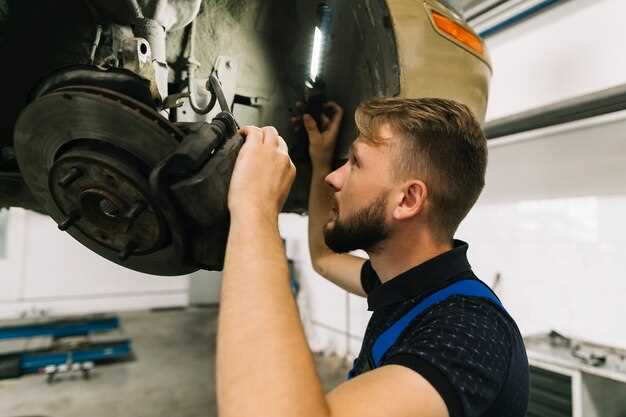
Maintaining your vehicle’s braking system is crucial for ensuring safety on the road. Over time, brake components naturally wear down and may require replacement to maintain optimal performance. Recognizing the early signs of brake deterioration can prevent costly repairs and, more importantly, ensure your safety and the safety of others.
Every driver should be mindful of various indicators that suggest brakes are nearing the end of their lifespan. Unusual noises, a decrease in responsiveness, and warning lights on the dashboard often serve as initial alerts that something is amiss. Understanding these signs can help you make timely decisions regarding maintenance and repairs.
In this article, we will explore the essential signs that indicate your brakes may be due for replacement. From the sound of grinding metal to the feeling of vibrations while braking, each symptom informs you of the potential risks associated with neglecting brake maintenance. Stay informed and proactive to ensure a safe driving experience and to extend the lifespan of your vehicle’s braking system.
Unusual Noises When Applying Brakes
Hearing unusual noises when you apply your brakes is a significant indicator that they may require attention. These sounds often serve as early warning signs of wear and tear on various components of the braking system.
One common noise is a high-pitched squeal. This sound typically suggests that the brake pads are worn down and need to be replaced. Most modern brake pads are equipped with built-in wear indicators that emit this squeaking noise when the friction material has deteriorated to a certain level.
If you notice a grinding or scraping noise while braking, this is more serious. It usually means the brake pads have completely worn away, and the metal backing plate is making contact with the brake rotor. This can cause damage to both the rotor and the braking system, necessitating more extensive repairs.
Another noise to pay attention to is a rattling sound when you apply the brakes. This can indicate loose components, such as calipers or shims, which may need to be tightened or replaced. Rattling can also suggest alignment issues that can affect brake performance.
Lastly, any sort of hissing or whooshing noise may indicate a potential issue with the brake lines or the hydraulic system. Air entering the brake lines or fluid leaks can compromise braking efficiency and safety.
In conclusion, if you experience any unusual noises when applying brakes, it’s crucial to consult a qualified mechanic to diagnose and resolve the issue before it leads to more severe problems or accidents.
Vibration or Pulsation in the Brake Pedal

Experiencing vibration or pulsation in the brake pedal is a significant indicator that your braking system may need attention. This sensation can occur when the brake pads or rotors are worn or damaged. When you press the brake pedal and feel irregular movements, it suggests that the contact between the brake pads and rotors isn’t smooth.
Worn Brake Rotors: One of the most common causes of pedal vibration is warped brake rotors. Over time, excessive heat and wear can lead to uneven surfaces on the rotors. This inconsistency causes the brake pads to grip unevenly, resulting in pulsation when you brake.
Brake Pad Issues: Another factor could be the condition of your brake pads. If they are worn down unevenly or have been contaminated by oil or moisture, they may not provide the necessary friction, leading to noticeable vibrations during braking.
Improper Installation: If brake components have been improperly installed or not aligned correctly, this can result in vibration. It is crucial to have a qualified technician install and inspect your braking system to avoid these issues.
Impact on Safety: Ignoring vibrations in the brake pedal can pose serious safety risks. A compromised braking system can lengthen stopping distances and reduce your vehicle’s overall control. Addressing these symptoms promptly can help ensure your vehicle remains safe and responsive on the road.
If you notice any vibrations or pulsations when braking, it’s essential to have your brakes inspected by a professional. Regular maintenance and timely replacements will help maintain the effectiveness of your braking system and enhance your driving safety.
Warning Lights on Your Dashboard

One of the most critical indicators that your brakes may need replacement is the appearance of warning lights on your dashboard. These lights are designed to alert you to potential issues that could compromise your vehicle’s safety.
Antilock Brake System (ABS) Light: If this light illuminates, it suggests a problem with the ABS. While it doesn’t necessarily indicate that your brake pads are worn out, it is a sign that you should have the braking system checked, as it could affect your stopping power.
Brake Warning Light: This light typically resembles an exclamation mark within a circle and appears when there is a general issue with the brake system. It can indicate low brake fluid levels or worn brake pads. Ignoring this alert can lead to severe brake failure.
Traction Control Light: If this light is on, it may signal that your vehicle’s traction control system is active, which could occur when the brakes are applied unevenly. This situation may arise from worn brake components and requires immediate attention.
Check Engine Light: While this light can indicate various engine-related issues, it can also be triggered by brake problems, particularly if your vehicle’s braking system has sensors that communicate with the engine control unit. A diagnostic check may be necessary to pinpoint the issue.
Regular monitoring of these warning lights is crucial for maintaining your vehicle’s safety. If any of these indicators illuminate, seek professional assistance promptly to prevent exacerbating any underlying issues.

